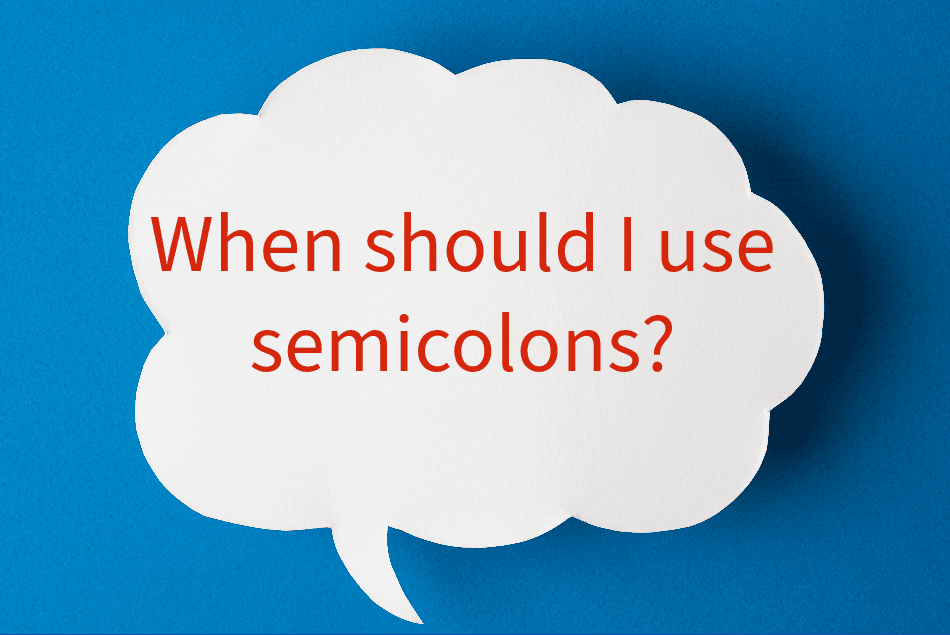The recent documentary Turn Every Page chronicles the relationship between bestselling author Robert Caro and his longtime editor Robert Gottlieb. Their editorial collaboration spanned numerous books over an amazing five decades, but that doesn’t mean it was without conflict. Among other topics covered in the film is these literary lions’ long-running dispute over semicolons.
Hearing of the conflict, I knew right away who was on what side, and whose side I was on. Author Caro was extravagant with his semicolon usage, and editor Gottlieb and I were against their overuse.
A semicolon is a punctuation mark linking two independent clauses that are related or thematically linked; a writer might want to state something similarly but in a different way.
Writers are generally discouraged from writing long run-on sentences separated by comma after comma, but in some cases it makes sense to link two sentences with a semicolon. Using this mark suggests these sentences are more closely related than the average two consecutive sentences; a semicolon emphasizes their connection. A semicolon offers a more robust pause than a comma, but it’s not a full stop like a period.
Basically, use of a semicolon is a stylistic choice. Usually you can rewrite a sentence and avoid them. Some folks love them, while to others this punctuation mark seems pompous or unnecessary. Author Kurt Vonnegut argued against their use, saying, “All they do is show you’ve been to college.”
Here lies the editor-writer dispute. Editors prefer short, concise sentences; authors may instead want to rhapsodize at length, expanding upon their ideas and, in lavish detail, their progression of thought.
A semicolon replaces conjunctions like “because” or “and.”
NO: Lars’s bicycle needs repair; because its gears are shot.
YES: Lars’s bicycle needs repair; its gears are shot.
Skip the semicolon if you include those connecting words.
YES: Lars’s bicycle needs repair because its gears are shot.
Other conjunctions include “like,” “but,” “or,” “nor,” “for,” “so,” “yet.”
Transitional expressions or phrases: consequently, hence, therefore, however, also, meanwhile, nevertheless, moreover, and furthermore, such as, after all, even so, in addition, on the other hand, for example, as a result, and in conclusion
If two independent clauses are connected by a conjunctive adverb (or another transitional phrase), insert a semicolon.
Ruby ate the entire package of black licorice; as a result, she felt oogy.
He carried around a much-thumbed hardback collection of Keats; consequently, she assumed he was deep.
Do not capitalize the first word after the semicolon.
By using the semicolon you are crafting a single (complicated) sentence.
NO: His music was moving; He pulled at her heartstrings.
YES: His music was moving; he pulled at her heartstrings.
Semicolons can also be used to help organize lists of three or more items in sentences that include a lot of commas.
In these instances, the semicolon becomes a sort of super-comma.
Their plans included taking the dog for a long walk, though not down Tenth Street because of you-know-who; heading to the river to watch the boats, which are always passing by later in the afternoon; and then tossing the stick in the park.
Colons and semicolons are not interchangeable.
As stated above, semicolons join related independent clauses in the same sentence without a conjunction. They replace the conjunctions.
Lars had to get more sheet music; more than thirty people were expected.
A colon, by contrast, introduces information set up by the previous clause. It’s used before a list, an example, or an explanation.
One thing was missing: a piano.
Chic Em Dashes versus Dusty Old Semicolons
Em dashes have been gaining in popularity and usage. Today’s writers find the mark more flexible, more interruptive, and more dynamic than the snootier semicolons used in more formal writing. Em dashes chop up sentences just like semicolons, but they can also separate out incomplete clauses.
This dispute over semicolons between editor and author may seem quaint; however, as a writer, you must choose your side.
Share on Facebook which you prefer: semicolon or em dash?





